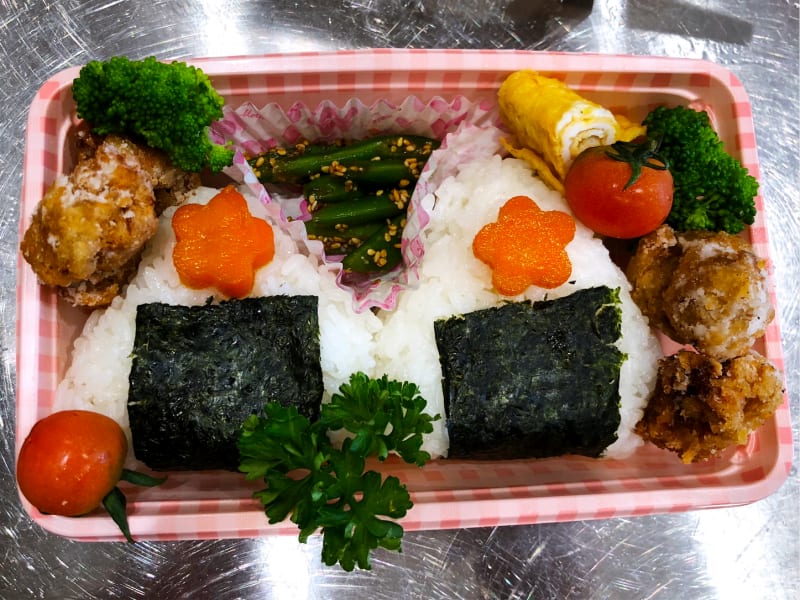Thinking I could use a cooking lesson or two rather than surviving on convenience store food, I decided to take a class at BentoYa in Nishiazabu. The two instructors, Akiko Sugawara and Rina Ikeda, greeted us with a warm welcome. Akiko, who primarily led the class, first introduced us to the history of bento, slowly leading us to our cooking tables where the ingredients were carefully prepared and the spices under wraps in tiny bowls.
Steeped in Japanese Tradition
The story of BentoYa starts when the lives of Akiko Sugawara and Rina Ikeda first crossed paths. With a family history in the rice planting business, Akiko Sugawara’s relationship with cooking dates back to the early age of seven, when she started working on the family farm as the household cook. Akiko asserts, “It was my chore, yes, but these routines turned into passion as I further discovered about food and cooking methods.”
Indeed, her passion for cooking flourished during the next 15 years while she tirelessly prepared dishes for her family, and finally came to fruition when she moved to Canada. There her concept “BentoYa Catering” was granted funding, and the brand was launched. With the intention of bringing her talent and zeal for cooking back to Japan, she spent a few years successfully growing her brand in Canada and teaching Japanese cooking lessons in English. “At that time,” Akiko explains, “my main focus was healthy and organic Japanese cooking”.
Meanwhile, Rina Ikeda’s traditional upbringing of “good housewives need good culinary skills” led her to attend the ABC Cooking School after graduating from high school. While learning how to cook and eat healthy, Rina, who was overweight as a youth, lost 20 kilograms in the process, lighting a new flame in her to teach others, particularly foreigners, how to create a healthy lifestyle through cooking. She also became a certified Tofu Master and a Junior Vegetable Sommelier, while her passion for teaching Japanese culture to others even led to her acquiring a license to teach people how to wear a kimono.
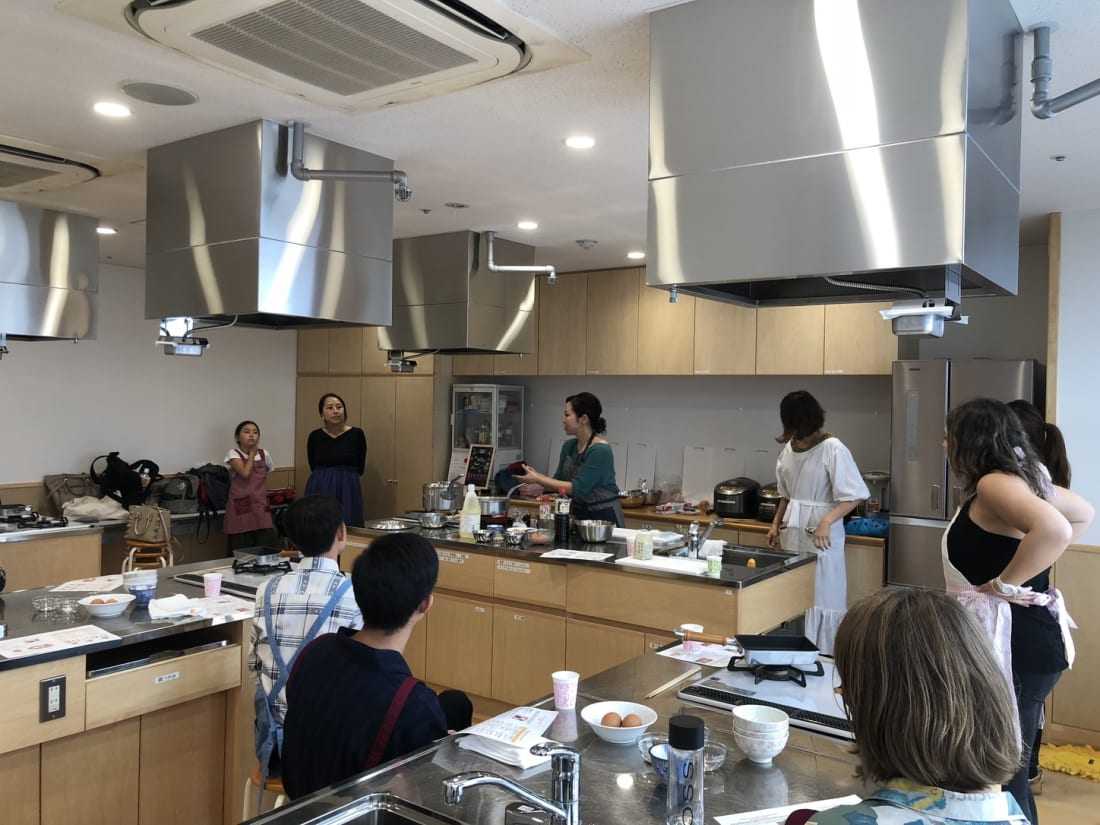
A Match Made in the Kitchen
When Akiko moved back to Japan, she met entrepreneur Rina Ikeda at a Washocook Cooking Certification class and together they combined their passions to make BentoYa bloom in Japan. BentoYa, or “Lunch Box place” in English, became a cooking class that blends authentic and traditional Japanese cuisine with vegetarianism.
Rina and Akiko both shared the same beliefs about making vegetarian bentos for health and humanitarian purposes. Akiko says, “I wanted people, especially children, to know that dishes without animal-related ingredients can be amazingly delicious. I believe that practicing sustainability and living an environmentally friendly lifestyle can better our health dramatically while also saving animals and the planet.” The class mainly attracts foreigners from all over the world.
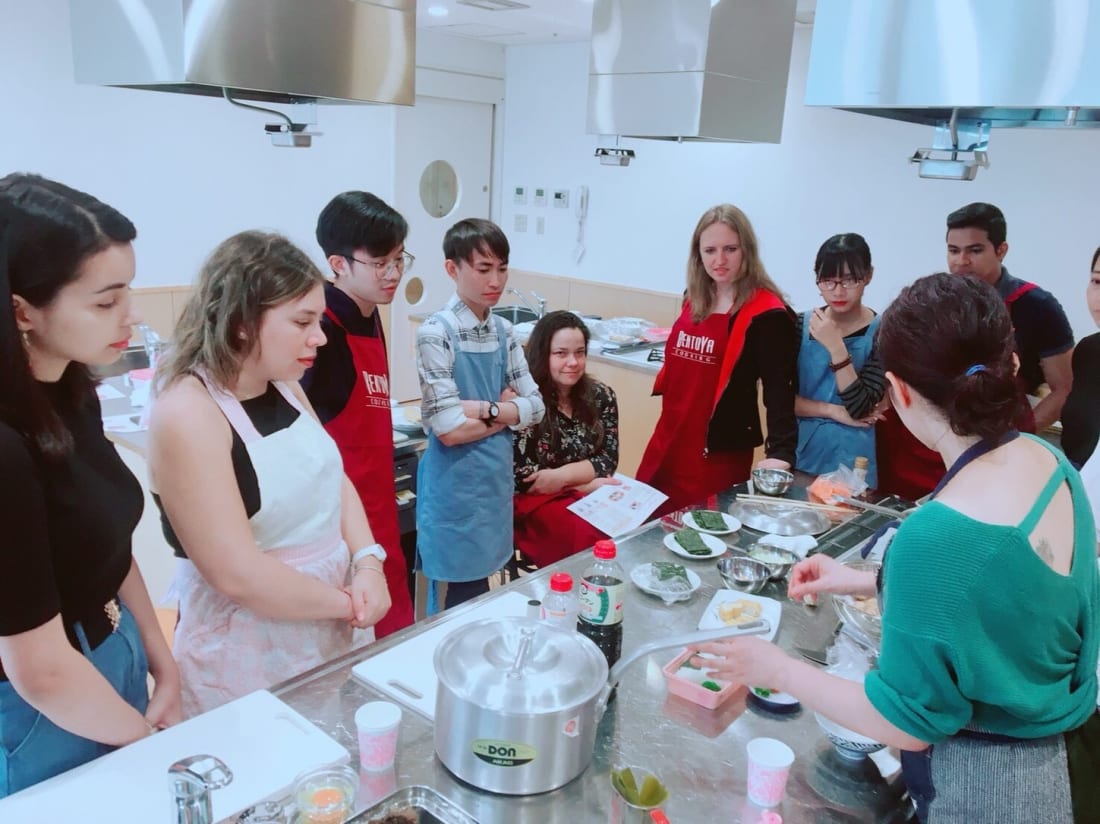
Creating a Bento that Shines
For our class, Akiko and Rina taught us how to make a vegetarian bento that combined green bean gomae, glazed carrot, vegan karaage, heart-shaped baked eggs and, last but not least, onigiri. We first started with the tamagoyaki, or fried eggs, which in the Tokyo region are traditionally slightly sweet as sugar is added to the mix. One of the highlights of making tamagoyaki is the peculiarly shaped frying pan. Tamagoyaki is such a staple in Japanese cuisine that it has its own specific pan shaped like a rectangle, its sole purpose being to fry eggs in a long rectangular roll. It makes for a perfect souvenir to bring back for family members or friends who are keen on cooking.
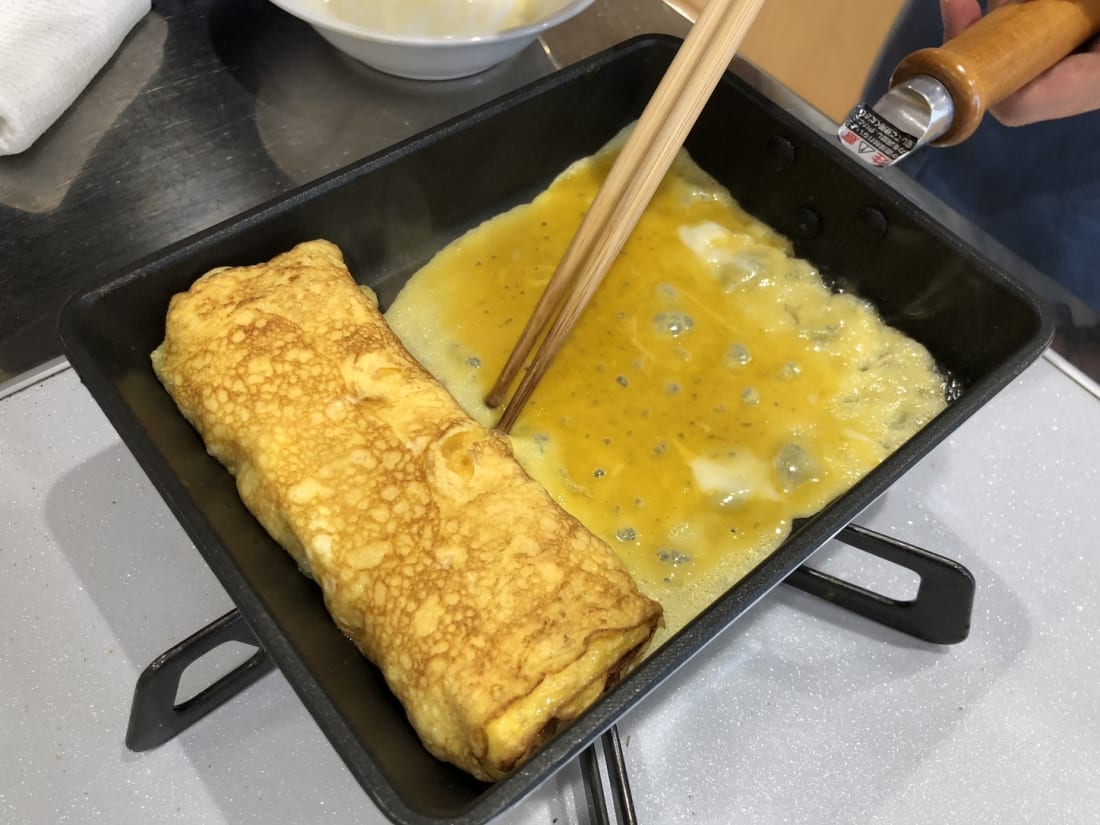
Sweet and Savory Recipes
The green bean gomae is also another staple as a Japanese appetizer. Gomae is a dish dressed in sweet and savory sesame sauce made with ground sesame seeds, the nutty flavor of sesame adding a Japanese twist to your vegetables.
Another memorable element was the vegan karaage. Usually made from Japanese-style boneless fried chicken, this dish is found in food stands and Japanese-style bars, as they make for the perfect juicy on the inside, crunchy on the outside snack. For our class however, our karaage was made with a type of textured soy protein as a replacement for chicken. To get the juicy interior, you have to soak the pieces of soy protein in water until fully hydrated. Once fried, it has the same savory taste of chicken and presents itself as an excellent and healthy alternative.
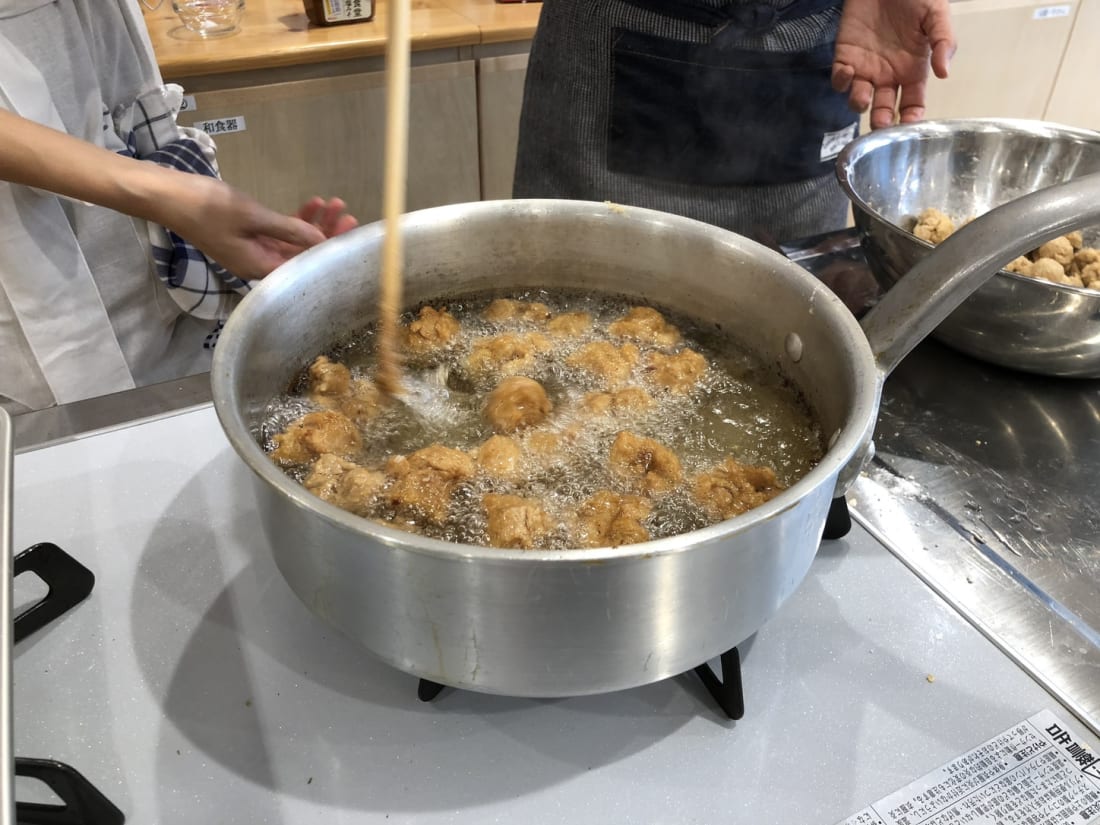
A Kawaii Homemade Meal
Once all the ingredients are prepared, the whole idea of a bento is to make it as colorful, cute and packed as possible. You can make heart shapes with the tamagoyaki or flower shapes with the carrots for a vibrant decoration to your main dish.
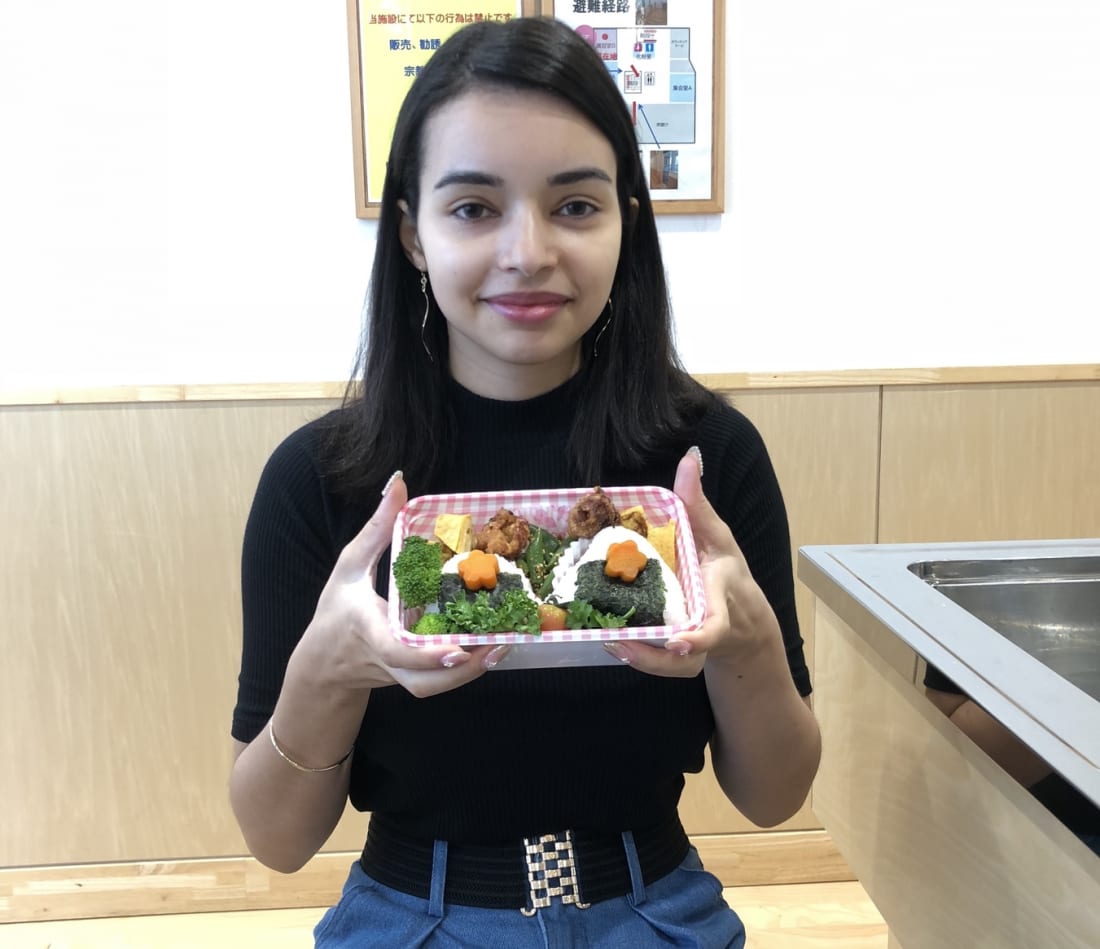
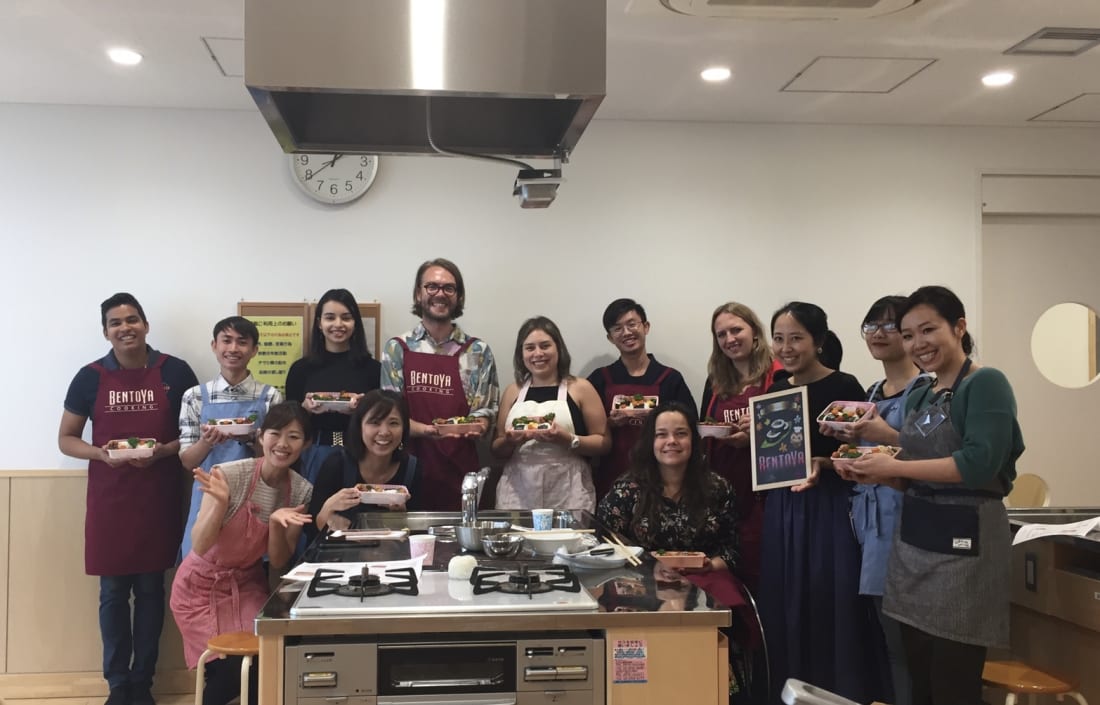
For BentoYa map and contact details, see our Concierge listing.

